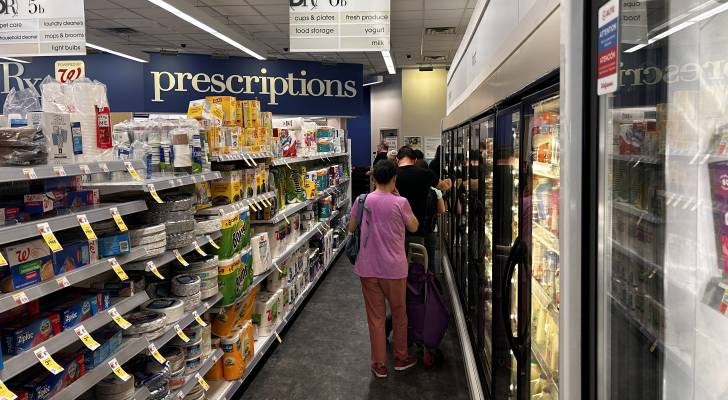
Retail theft is on the rise, leaving retailers grappling with how to protect their inventory without alienating customers. The problem has reached a tipping point.
According to the National Retail Federation, shoplifting incidents increased by 93% between 2019 and 2023, leading to more than $100 billion in losses.
Don’t miss
- I’m 49 years old and have nothing saved for retirement — what should I do? Don’t panic. Here are 5 of the easiest ways you can catch up (and fast)
- Thanks to Jeff Bezos, you can now become a landlord for as little as $100 — and no, you don’t have to deal with tenants or fix freezers. Here’s how
- Gain potential quarterly income through this $1B private real estate fund — even if you’re not a millionaire. Here’s how to get started with as little as $10
In response, many stores — including Walgreens, Target, and Dollar Tree — have introduced drastic measures by locking up frequently stolen items like toothpaste, shampoo and baby formula.
This tactic, once reserved for the most expensive items, now extends to essential items, frustrating shoppers who find entire aisles of goods behind clear security glass.
But the strategy is backfiring. Walgreens CEO Tim Wentworth admitted in a recent earnings call, "When you lock things up … you don’t sell as many of them. We’ve kind of proven that pretty conclusively."
The result? Walgreens reported a $245 million operating loss for the quarter — a steep increase from the previous quarter — and announced plans to close hundreds of stores nationwide.
Theft is rising — but is locking up merchandise the answer?
While theft remains a growing issue, locking up merchandise creates new problems for consumers. Shoppers accustomed to same-day delivery and instant convenience often balk at waiting for an employee to unlock cases, leading to frustration and lost sales.
A Numerator survey found that one in three consumers will either switch retailers or abandon the purchase altogether rather than wait for assistance to unlock merchandise.
The impact is evident in consumer stories. CBS8 News visited a Walgreens in La Mesa, where shoppers expressed irritation at long wait times for accessing basic items.
"They need to be more responsive to get there — you could wait 10 to 20 minutes," one shopper told CBS8 News San Diego reporter Jenny Day.
Corey Potter, a shopper from Echo Park, described a similar experience at her local Target, where she found entire shelves covered in security glass. “It’s all locked up. “I hate it,” she told the LA Times.
Potter once waited 15 minutes for an employee to unlock a case at another Target location. Now, when faced with long lines and understaffed stores, the 30-year-old often skips buying essential items in person. Instead, she resorts to a last-ditch solution she doesn’t particularly enjoy: turning to Amazon.
“Rather than go to Target and wait,” she said, “I’ll just give Daddy Bezos my hard-earned cash.”
Retailers, however, can’t afford to dismiss this frustration. As business attorney and analyst Parag Amin explained to CBS News, "You’ve gotta make it more convenient. You’ve gotta make people want to go there — when they can usually buy things for easier and cheaper off the internet.”
Read more: Want an extra $1,300,000 when you retire? Dave Ramsey says this 7-step plan ‘works every single time’ to kill debt, get rich in America — and that ‘anyone’ can do it
What’s the solution?
As theft eats into billions of revenue, retailers now also risk losing millions more from frustrated shoppers taking their business elsewhere. Walgreens and others must find ways to address theft while keeping customer experience a priority.
During the earnings call, Wentworth admitted that locking items behind security glass hasn’t curbed losses effectively. He shared that the company’s asset protection team is now working on “creative” solutions to fight theft, as reported by Day.
For retailers like Walgreens, balancing security with shopper convenience is necessary. As theft continues to rise, the numbers suggest it’s time to rethink lock-and-key policies before customers turn away forever.
What to read next
- Don’t have the cash to pay Uncle Sam in 2025? You may already be eligible for a ‘streamlined’ handshake with the IRS — here’s how it works and how it can potentially save you thousands
- Here are 5 ‘must have’ items that Americans (almost) always overpay for — and very quickly regret. How many are hurting you?
- Robert Kiyosaki warns of a ‘Greater Depression’ coming to the US — with millions of Americans going poor. But he says these 2 ‘easy-money’ assets will bring in great wealth. How to get in now
This article provides information only and should not be construed as advice. It is provided without warranty of any kind.